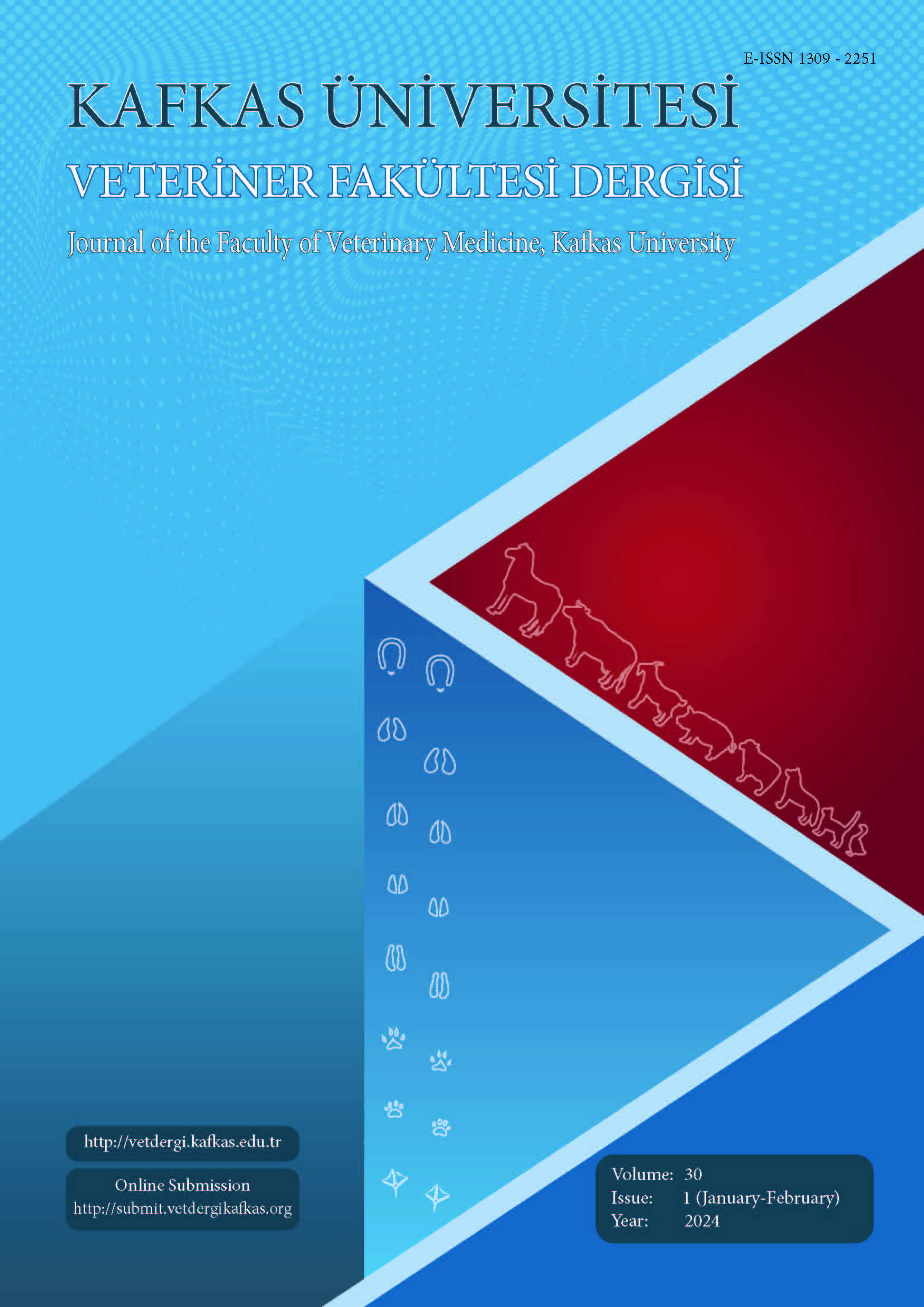
This journal is licensed under a Creative Commons Attribution-NonCommercial 4.0 International License
Kafkas Üniversitesi Veteriner Fakültesi Dergisi
2024 , Vol 30 , Issue 1
Evaluation of Cold Carcasses of Kıvırcık and Romanov Lambs by Geometric Morphometric Method
1Istanbul University-Cerrahpaşa, Institute of Graduate Studies, TR-34320 Istanbul - TÜRKİYE2Istanbul University-Cerrahpaşa, Faculty of Veterinary Medicine, Department of Food Hygiene and Technology, TR-34320 Istanbul - TÜRKİYE
3Istanbul University-Cerrahpaşa, Faculty of Veterinary Medicine, Department of Anatomy, TR-34320 Istanbul - TÜRKİYE
4Bursa Uludağ University, Institute of Health Sciences, TR-16059 Bursa - TÜRKIYE
5Guru Angad Dev Veterinary and Animal Sciences University (GADVASU), College of Veterinary Science, Department of Veterinary Anatomy, Rampura Phul, Bathinda-151103, Punjab, INDIA
6Siirt University, Faculty of Veterinary Medicine, Department of Anatomy, TR-56100 Siirt - TÜRKİYE DOI : 10.9775/kvfd.2023.30539 Carcass discrimination is a very important issue in the evaluation of different sheep breeds as lamb meat for the red meat sector and the study aims to determine the carcass differences of Romanov and Kıvırcık lambs up to 6 months old by 2D geometric analysis. In this study was carried out with six months old 13 Kıvırcık and 16 Romanov lamb cold carcasses. Principal components (PC) that describe the most variation in shape were determined for all samples. A discriminant analysis was performed for the mean shapes of two different breeds. In terms of size (centroid size), Romanov"s results were higher. The difference in shape (procrustes distance) was statistically significant for the whole carcass. The shape variations were pretty close for the top view of the whole carcass. It was observed that this analysis was not effective in the differentiation of breeds. The most significant analysis between the two feedings was in the side view of the whole carcass. A total of 26 PCs were obtained from the side view of the whole carcass, 25 PCs from the inside view of half carcass, and 12 PCs from the shape analysis made from the top view of the whole carcass as a result of PCA analysis. PC1 was found to describe for more than 40% shape variation for each view. The lower border of Romanov"s rib cage was more ventral according to the results. Also, Kıvırcık had a straighter thoracal and lumbar vertebrae arrangement, while Romanov"s was curved. Geometric morphometry can be a useful method for carcass separation. Keywords : Geometric morphometrics, Principal component analysis, Sheep, Shape analysis, Taxonomy










